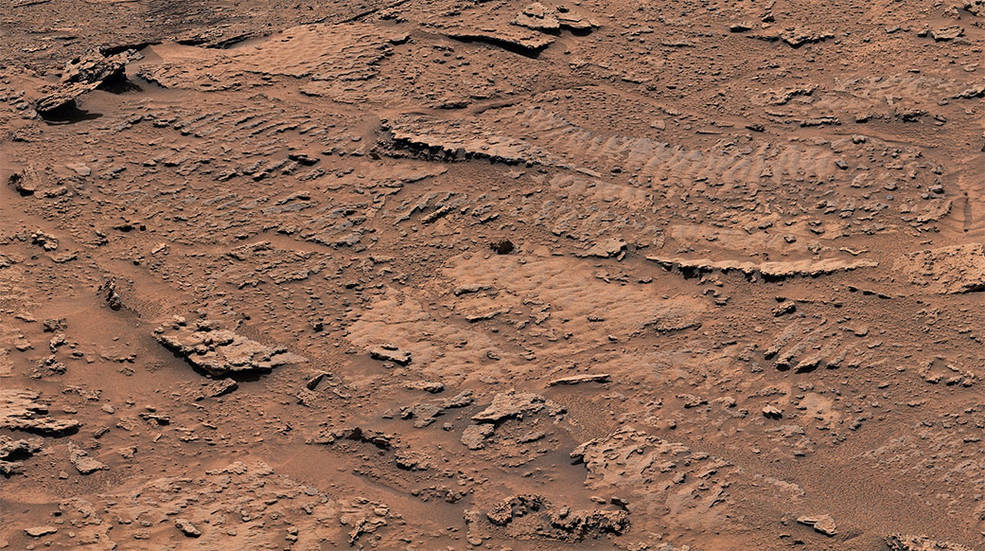
Curiosity rover finds new clues that Mars once had water
NASA's Curiosity rover has found new clues that Mars once had water. As NASA informs, the new evidence is located in the Mars mountain range called Gediz Vallis.
According to scientists, the wind has changed the surface of the valley to a certain extent over time. However, from the materials provided by Curiosity, it becomes clear that a channel runs through this valley, which reaches the slopes of Mount Sharp. According to scientists, it was eroded by water, which suggests that a river probably passed through it. Also, scientists assume that the valley once experienced wet mass landslides that sent car-sized stones and boulders rolling down the mountainside to the valley floor.
Because the rock pile sits on top of all the layers in the valley, scientists are confident that it is clearly one of the youngest features on Mount Sharp. Curiosity spotted the debris twice last year in the Gediz Vallis Range, but was only able to study it from a distance. The team of this Mars rover hopes to have another chance to view it later this year.
Curiosity found another noteworthy thing that fascinated the team. The Mars rover found an unusual rock texture in the area, which scientists say is likely due to some regular weather or climate cycle, such as dust storms. Not far from them are boulders consisting of strata which are of a regular nature, both in their distance from each other and in their thickness.
Scientists have explained that this type of rhythmic pattern in Earth's rock layers is often caused by atmospheric events that occur at periodic intervals. It is possible that the rhythmic patterns of these Martian rocks arose from similar events, which may indicate that Mars experienced climate changes at one time. Curiosity project scientist Ashwin Vasavada said water ripples, debris flows, and rhythmic patterns in rock layers are clues that the ancient climate of Mars was surprisingly complex, similar to that of Earth.
Recently, the Curiosity rover discovered an unusual rock on Mars, which is significantly different from the surrounding land mass, both in its smooth surface and gray color. NASA scientists had noted two possible reasons for the origin of this unusual stone. According to them, it could be a fragment that fell from the top of Mount Sharp, or a meteorite that once fell on Mars from space.
- Related News
- The end of the Universe: 3 plausible theories of a global apocalypse
- Mutated bacteria resistant to drugs found on the ISS: What does this mean and why is it a problem?
- 4 flares erupted from Sun in rare event: the Earth may be hit by geomagnetic storm (video)
- 11 incredible satellite photos published on Earth Day
- NASA shows all of Ingenuity's flight trajectories in one video
- Could life exist on Saturn's moon Enceladus?
- Most read
month
week
day
- Once in a lifetime phenomenon: This year we will observe a star explosion that occurred 3,000 years ago 905
- Meta unveils Llama 3 and claims it's the "most powerful" open source language model 898
- WhatsApp to integrate AI function: What will it do? 837
- Google fires 28 employees who protested against company's cooperation with Israel 813
- iPhone 17 Plus will have smaller screen 768
- 5 best smartphones with IPS screens 752
- How DNA analysis helps to solve crimes and who can sell your DNA data and why: Interview with former FBI scientist Bruce Budowle 734
- Huge battery, IP68/IP69K and MIL-STD-810H certifications: Ulefone will present the Armor Pad 3 Pro tablet (photo) 711
- Sentry Enterprise presents first bank card with screen: How does it work? 607
- What risks do crypto and digital currencies pose? Interview with Rasmus Nielsen 579
- Archive
